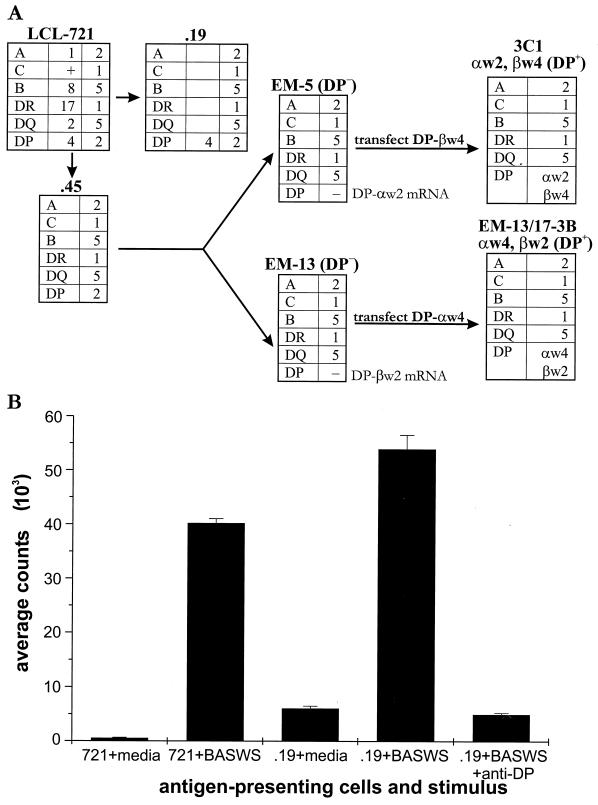FIG. 5.
Analysis of the role of HLA-DP in presentation of WI-1 to T cells. (A) The “family tree” of parental cell line LCL 721, its HLA loss mutants, and the HLA-DP transferents used in this study. HLA-DP transferents 3C1 and EM13/17-3B were generated by gene transfer into HLA-DP loss mutants EM5 and EM13, respectively. As illustrated, mutant EM5, which retains DPαw2 mRNA as determined by Northern analysis, received DPβw4. Conversely, mutant EM13, which retains DPβw2 mRNA as determined by Northern analysis, received DPαw4. (B) Antigen presentation by LCL cells and HLA loss mutants. WI-1-reactive T cells (clone K20B) are from a patient homozygous for HLA-DPw4. BASWS was used to stimulate T cells as it shares epitopes with WI-1. An antibody against HLA-DP (MAb B7/21) was added to wells (2 μg/well) to block proliferation evoked by .19. MAbs against HLA-DR (L243) and HLA-DQ (G.2B.2) (21) were similarly added to separate wells as controls, without effect.

